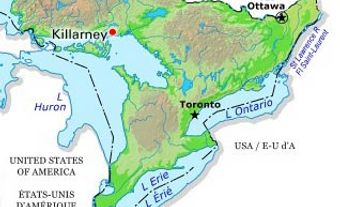Dauphin, Manitoba, incorporated as a village in 1898, as a town in 1901 and as a city in 1998, population 8251 (2011c), 7906 (2006c). The City of Dauphin is located in southwest Manitoba, 304 km by road northwest of Winnipeg, on the Vermilion River. It is a prosperous supply, distribution and transportation centre, serving a rich agricultural region stretching from the Saskatchewan border east to Lakes Manitoba and Winnipeg and north to Swan River. It has an active tourist trade, being situated between RIDING MOUNTAIN NATIONAL PARK and Duck Mountain Provincial Park. Countryfest, Canadas longest-running country music festival (since 1989) is held on the north side of Riding Mountain National Park in July.
Pierre de LA VÉRENDRYE first visited the area in the 1730s and gave the name Dauphin, for the eldest son of the king of France, to a post in the area (1741). Settlers from Ontario arrived in the late 1870s, and the villages of Old Dauphin and Gartmore developed near the present townsite, which was established after the arrival of the Lake Manitoba Railway (1896). UKRAINIAN immigrants set up one of their earliest rural settlements in the area (1896-98) and still maintain a strong sense of their cultural past. The Ukrainian Catholic Church of the Resurrection (architect, Father Philip RUH) was built in 1939 and features the early Kievan style of Eastern Byzantine architecture. One of the best examples of a prairie cathedral in Manitoba, it was designated a provincial historic site in 1994. Dauphin initiated Canada's annual National Ukrainian Festival in 1966.
Dauphin is the birthplace of World War I hero Lieutenant-Colonel William (Billy) BARKER and the citys airport was named after him in 1998.

 Share on Facebook
Share on Facebook Share on X
Share on X Share by Email
Share by Email Share on Google Classroom
Share on Google Classroom


